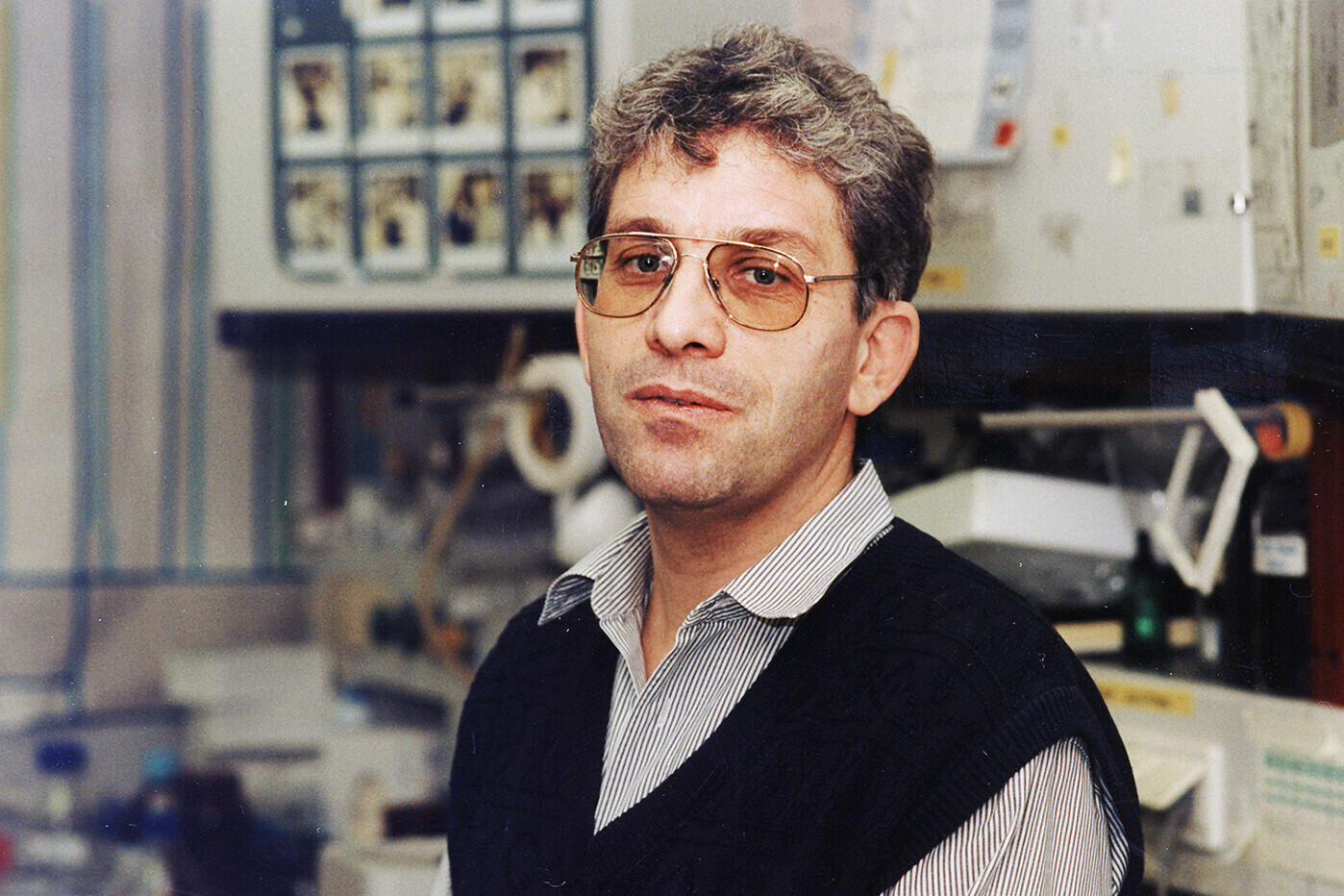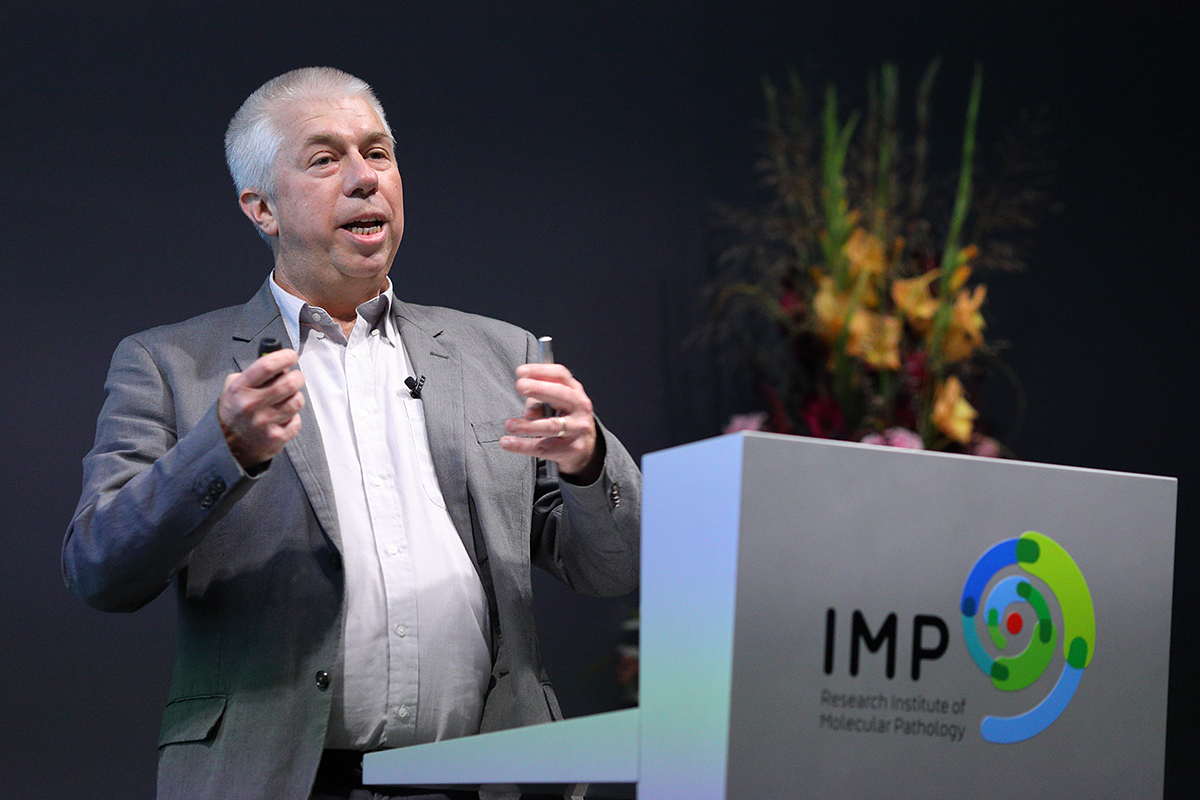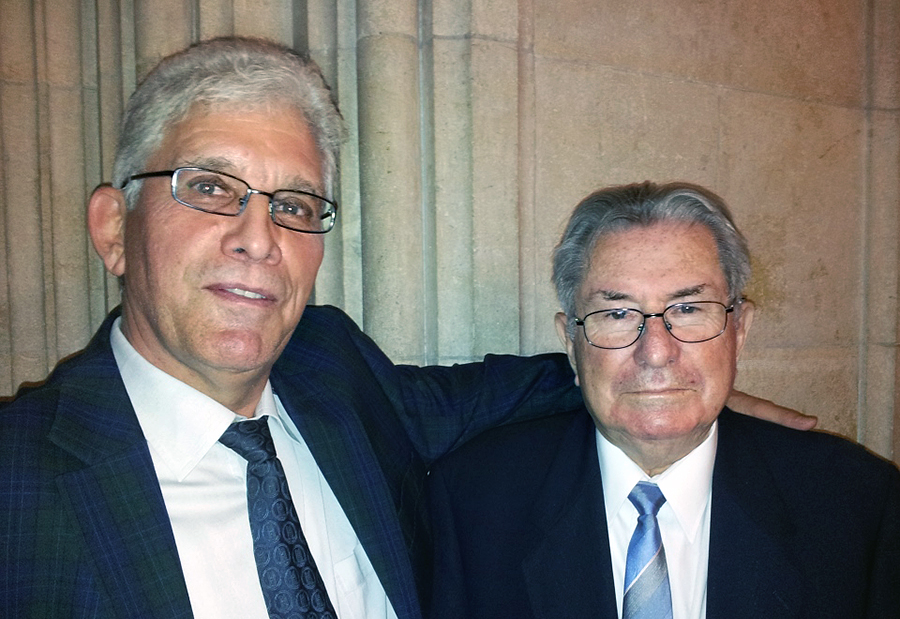Pax5 – providing fundamental insights into cell differentiation for over three decades
B cells and T cells are the white blood cells responsible for acquired immunity, providing acute and long-term protection of the host against pathogens. During his more than 30 years as a principal investigator at the IMP, Meinrad Busslinger’s research has focused on the roles of transcription factors in the commitment to and differentiation of the B cell lineage. In particular, his work on Pax5 has revealed wide-reaching insights into the mechanisms of lineage commitment.

Meinrad Busslinger began his scientific career investigating the regulation of sea urchin histone genes as a PhD student in the group of Max Birnstiel (then at the University of Zurich), who would later become the Founding Director of the IMP. After having worked as a postdoc with Richard Flavell at the MRC Institute Mill Hill in London (1981–1982), where he studied the regulation of globin gene expression, Meinrad set up his own group back at the University of Zurich, returning to sea urchins. His group discovered an unusual set of histone genes with differential expression in the embryo and tissue-specific expression in the adult. During the course of this work, they identified a previously unknown tissue-specific transcription factor that interacted with the histone gene promoters, but its purification turned out to be challenging. “Being in Zurich and far away from the sea, we couldn’t get hold of enough sea urchin material”, Meinrad explains. Aside from the practical issues, it was clear to Meinrad that he would have to move away from the sea urchin as a model organism – the lack of genetic tools meant that it could not keep up with other models.
It was around this time that Max asked Meinrad whether he would like to join the new institute in Vienna as a Senior Scientist. Despite the pessimistic views of some of his peers in Switzerland, Meinrad didn’t hesitate. “I was always a risk-taker”, he says. “And with Max in the driving seat, I was never worried.” With the move to the IMP in 1987, Meinrad made the switch to mammalian systems. His group took the sea urchin histone gene promoters and used them to fish out interacting factors from extracts of various mammalian cell lines. Interestingly, they found a binding activity specific to B cells (Barberis et al., Genes Dev 1990). Biochemical purification and cDNA cloning identified the coding gene as Pax5, which was expressed in mouse B cells, the developing central nervous system and adult testis (Adams et al., Genes Dev 1992).
Since the haematopoietic system, which gives rise to all types of blood cells, was already well-characterised, Meinrad decided to focus his group’s efforts on elucidating the function of Pax5 in B cells. There was just one problem: “I never had a single immunology lecture during my entire studies”, Meinrad says. It was clear that he would need support from an immunologist, so he teamed up with Antonius (“Ton”) Rolink from the Basel Institute for Immunology in Switzerland; “an encyclopaedia of B cell immunology”, as Meinrad describes him.

Stephen Nutt, who joined Meinrad’s group as a PhD student in 1994, began a collaboration with Ton, spending a month each year in Basel. He used in vitro B-cell differentiation assays developed by Ton to investigate the function of Pax5. As expected from the phenotype of the knockout mouse that Meinrad’s lab had produced (Urbánek et al., Cell 1994), precursor cells were unable to differentiate into B cells without Pax5. After performing one such in vitro assay, Stephen inadvertently left the cells in the incubator while he went home to Australia for Christmas. Upon his return, he was astonished to find that, while the wild-type cells had differentiated into mature B cells and died, the Pax5-deficient cells had changed their shape and continued to grow.
He went to Switzerland and repeated the experiment with Ton – sure enough, the cells lacking Pax5 appeared to be differentiating into other haematopoietic cell types. “That was where the collaboration between the IMP and the institute in Basel was so powerful”, Stephen says – they were able to begin experiments more or less the next day, adding various cell signalling factors to demonstrate differentiation of the Pax5-deficient precursor cells into a variety of cell types including bacterium-engulfing macrophages, antigen-presenting dendritic cells and bone-resorbing osteoclasts. They concluded that Pax5 was ensuring commitment to the B-cell lineage by suppressing alternative lineage choices (Nutt et al., Nature 1999 – republished as a pillars article in the Journal of Immunology in 2015). Remarkably, Pax5-deficient cells were also able to fully reconstitute T-cell development in immunodeficient mice (Rolink et al., Nature 1999).
The speed of progress during this period was extraordinary: “In the space of a couple of months, we’d generated the core data for those two papers”, Stephen recalls, referring to the two Nature papers that appeared in the same issue. The work brought about a major shift in understanding of cell differentiation. “We put repression on the scene”, Meinrad says, as the findings challenged prevailing views of lineage commitment based solely on lineage-specific gene activation.
Much of Meinrad’s research since then has focused on this important transcription factor, providing yet more fundamental insights into normal development, as well as disease. His group showed that Pax5 is not only required to initiate a B cell transcription programme, but also to maintain it – its loss converts committed pro-B cells back into haematopoietic progenitors (Mikkola et al., Science 2002). Furthermore, deletion of Pax5 allows dedifferentiation of mature B cells to early progenitors and results in aggressive blood cancers (Cobaleda et al., Nature 2007). “Roughly a third of all acute B-cell leukemias have a mutation in one of the two Pax5 alleles”, Meinrad says, highlighting the importance of understanding this transcription factor beyond basic understanding of lineage commitment pathways. Indeed, Pax5 is used as a diagnostic marker and, although difficult to target therapeutically, is the subject of clinically-motivated research, also in Meinrad’s lab (e.g., Smeenk et al., EMBO J 2017).
A third fruitful line of research has been investigating the role of Pax5 in inducing spatial contraction (via long-range looping) of the locus encoding the immunoglobulin heavy chain (IgH) (Fuxa et al., Genes Dev 2004). This contraction provides an equal opportunity for each of the over 100 variable (VH) gene segments to participate in V(D)J recombination, which explains one of the fundamental tenets of adaptive immunity; how B cells are able to produce such a diverse antibody repertoire (Medvedovic et al., Immunity 2013).

Finally, Pax5 has not been the sole focus of Meinrad’s research – his group has also studied the role of other important transcription factors, including E2A, EBF1, Ikaros, Blimp1 and Bhlhe41, in regulating B cell development, immunity, antibody secretion and the suppression of autoimmune disease. An important challenge for the future will be to study the function of these transcription factors in B cell types that are lost upon elimination of the respective factor. Rapid targeted protein degradation combined with nascent transcript analysis now offers the unique opportunity to study the transcriptional effects of these regulators immediately after their loss and prior to any manifestation of the mutant phenotype.
The last three decades have seen Meinrad come a long way from histone gene expression in sea urchins (and not any closer to the sea!). He emphasises the importance of following exciting scientific questions, even if it means moving out of your area of expertise. He has been at the IMP longer than any other group leader, becoming Deputy Scientific Director in 2013. Asked whether he has ever considered leaving (he has of course had numerous offers from other institutes), he simply says that at the IMP he has never felt limited in what he wants to do – he can follow the science wherever it takes him.
First published in 2020.
References
A novel B-cell lineage-specific transcription factor present at early but not late stages of differentiation.
Barberis A, Widenhorn K, Vitelli L, Busslinger M; Genes Dev 1990
Pax-5 encodes the transcription factor BSAP and is expressed in B lymphocytes, the developing CNS, and adult testis.
Adams B, Dörfler P, Aguzzi A, Kozmik Z, Urbánek P, Maurer-Fogy I, Busslinger M; Genes Dev 1992
Complete block of early B cell differentiation and altered patterning of the posterior midbrain in mice lacking Pax5/BSAP.
Urbánek P1, Wang ZQ, Fetka I, Wagner EF, Busslinger M; Cell 1994
Commitment to the B-lymphoid lineage depends on the transcription factor Pax5.
Nutt SL, Heavey B, Rolink AG, Busslinger M; Nature 1999
Long-term in vivo reconstitution of T-cell development by Pax5-deficient B-cell progenitors.
Rolink AG, Nutt SL, Melchers F, Busslinger M; Nature 1999
Reversion of B cell commitment upon loss of Pax5 expression.
Mikkola I, Heavey B, Horcher M, Busslinger M; Science 2002
Pax5 induces V-to-DJ rearrangements and locus contraction of the immunoglobulin heavy-chain gene.
Fuxa M, Skok J, Souabni A, Salvagiotto G, Roldan E, Busslinger M; Genes Dev 2004
Conversion of mature B cells into T cells by dedifferentiation to uncommitted progenitors.
Cobaleda C, Jochum W, Busslinger M; Nature 2007
Flexible long-range loops in the VH gene region of the Igh locus facilitate the generation of a diverse antibody repertoire.
Medvedovic J, Ebert A, Tagoh H, Tamir IM, Schwickert TA, Novatchkova M, Sun Q, Huis In 't Veld PJ, Guo C, Yoon HS, Denizot Y, Holwerda SJ, de Laat W, Cogné M, Shi Y, Alt FW, Busslinger M; Immunity 2013
Molecular role of the PAX5-ETV6 oncoprotein in promoting B-call acute lymphoblastic leukemia.
Smeenk L, Fischer M, Jurado S, Jaritz M, Azaryan A, Werner B, Roth M, Zuber J, Stanulla M, den Boer ML, Mullighan CG, Strehl S, Busslinger M; EMBO J 2017